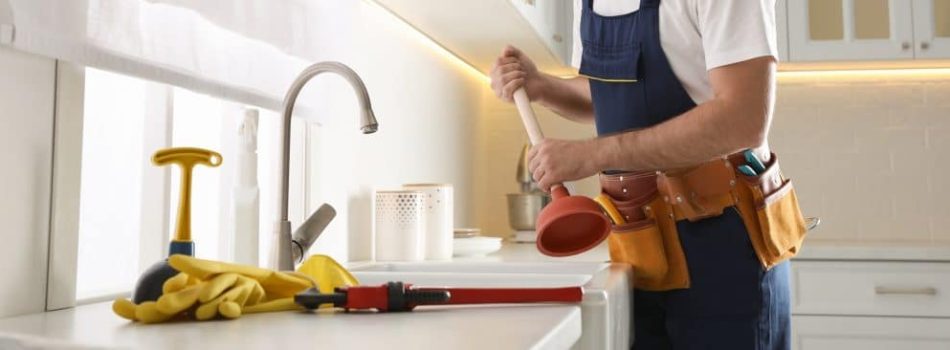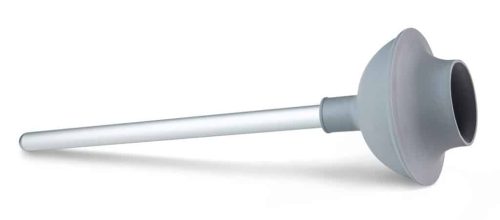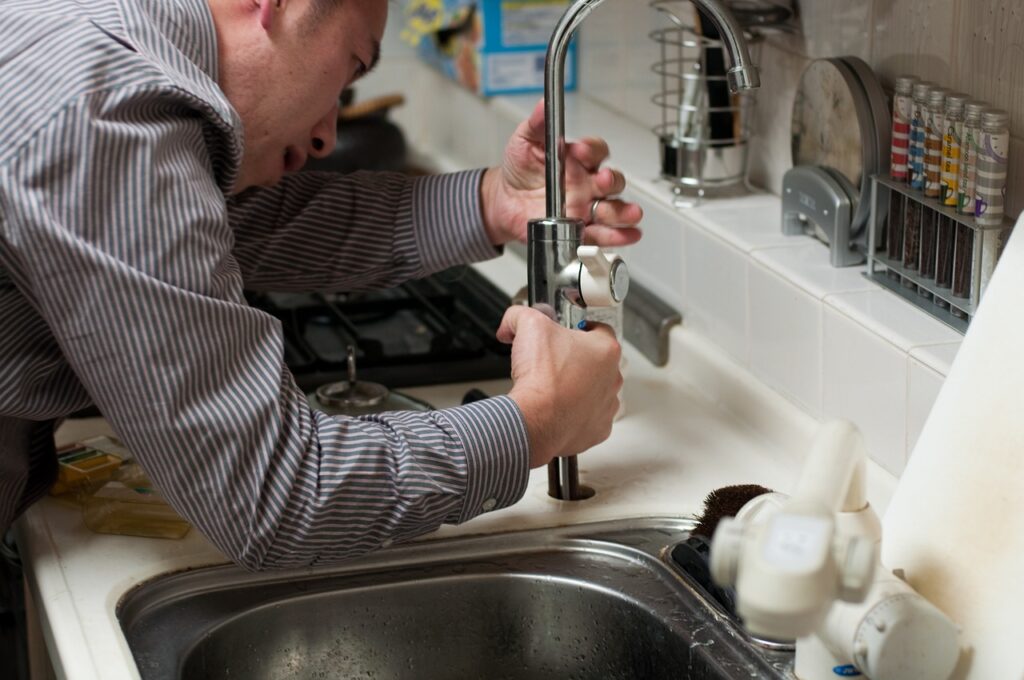You used the sink and watched, horrified, as the basin flooded with water until it seemed like it would overflow onto the kitchen floor. Fortunately, the water did drain out eventually, but it did so painstakingly and very slowly. Moreover, the slop in the basin wouldn’t go away completely.
You’ve got yourself a blocked sink. What should you do? Do you research how to unblock a sink so you can try to fix it yourself, or should you get professional plumbing services in Dubai instead?
To Call or Not to Call a Plumber?
Instinctively, you’ll want to fix your clogged sink yourself to minimise downtime. However, even if you succeed and get the greywater (the name of the wastewater from a sink) flowing again, you may still want to call a plumber.
A blocked sink may be a temporary condition. Perhaps a big wad of paper towels or a particularly large food scrap got through after someone used it without the strainer. A more likely scenario would be that a buildup of fat has been created by oils and fats from dishes and leftover food getting through, solidifying and blocking your pipes.
A wad of paper or fruit scrap should be an easy fix if you can fish it out. The accumulated fats and oils, however, require professional attention. Even if they’re not completely blocking your sink for now, they will do so eventually as more oils and fats stick to your pipe walls.
If sink clogging is a regular and recurring experience, you obviously have a sink plumbing problem.
Something that does not disintegrate, like toys, keys and coins, might have fallen through and been inadvertently flushed into the sink. It might now be stuck in your P-trap or pipes. Solid waste may have accumulated on the drain pipe walls, reducing flow. Your kitchen floor drain may be blocked, your plumbing system may be full, or you may have a poorly designed or installed sink.
Whatever the reason for your regularly clogged sink, it’s best to refer the problem to a plumbing technician who knows how to unclog a sink completely and prevent the problem from recurring.
Even if you’re confident your sink blockage is temporary, it may be best to have it checked by a technician anyway. You want to make sure the clog did not do any permanent damage or cause other issues.

How to Unblock a Sink: What You Can Do in Case of a Clogged Sink
While waiting for professional help to arrive, you can do the following to try and unclog your sink.
Use a Plunger
Wondering how to unclog a sink fast? Use a plunger. A plunger is particularly effective at unblocking partially blocked P-traps. It works by alternately suctioning and pressurising water to expel blockages.
There are two types of plungers:
Cup Plunger
A cup plunger (pictured above) is a cup-like rubber suction attached to a long wooden handle. It is designed for unclogging drains on flat surfaces and is probably the most commonly used type of plunger that you are most likely to have at your disposal.
Flange Plunger
A flange plunger is also a rubber suction cup attached to a wooden handle, however, its cup attachment is slightly different from a cup plunger because it has the addition of a protruding narrower cup (as pictured below).

Piston Plunger
This has a sealing cup on the end but uses a piston to force air into the waste trap to unclog blockages.
Top Tip!
A cup plunger should be your first recourse in case of a sink trap clog. A cup plunger is used to unclog blocked sinks, bathtubs and bathroom floors.
How to Unblock a Sink With a Plunger
Follow these steps to use a cup plunger to unblock a sink:
- If you have a double sink, plug the hole on the basin you’re not unblocking to ensure all the air you’re sucking in with the plunger goes up the blocked drain. If you have a dishwasher, clamp up the flexible part of its drain line before proceeding; this will prevent dirty water from flowing into your dishwasher.
- Press the lip of the rubber cup against the hole or drain opening and create a tight seal.
- Push down on the handle to collapse the rubber cup then release the pressure on the cup so it springs back up.
- Plunge up and down rapidly for around 20 seconds then pull the plunger up.
- Check if the water is flowing down the drain again. If not, repeat steps three and four multiple times. Continue until you unclog the sink.
Use a Plumbing Snake
A plumbing snake can unclog a sink fast and is more effective than a plunger. It works by physically removing obstructions. You can use it if the plunger doesn’t work. A drain snake, also known as a hand auger, is a corkscrew-tip wire coil. It works by pulling the clog out of the pipe.
To unclog the sink with a drain snake, do the following:
- Wear gloves.
- Start by scooping water out of the basin into a waiting bucket.
- Put the bucket under your kitchen sink’s P-trap. The P-trap is the J-shaped or U-shaped section of pipe under the sink.
- Loosen the slip nut that connects the trap arm (the horizontal pipe from the wall) to the P-trap.
- Loosen the slip nut that links the waste tee (the vertical pipe that descends from the basin) to the P-trap.
- Wiggle the P-trap free. Any water trapped in the P-trap, trap arm and waste tee should flow down and into the bucket.
- Clean out any debris trapped in the P-trap. Scrape off any debris you can see from the walls of the trap arm and the waste tee. Additionally, if the P-trap, trap arm and waste tee are cracked, replace them to prevent future problems.
- Replace the P-trap and try draining water down the sink again. If it’s still blocked, remove the P-trap again and move on to the trap arm.
- Use alligator pliers to loosen the slip nut that’s holding the trap arm in place.
- Once the trap arm is free, clear it of any debris that might be causing the blockage. Do this as well for the pipe stub-out (where the trap arm connects to the drain line going into the wall). If you find no significant blockages, get the plumbing snake.
- Loosen the setscrew on the drain snake, pull out around half a foot of cable, tighten the setscrew again, insert the tip into the drain stub-out, then crank the handle to feed the cable into the pipeline.
- When you’ve reached the blockage (you’ll sense this when it happens), continue spinning the auger handle until you feel the snake tip go through and hook into the obstruction.
- Retract the snake by turning the crank in the opposite direction and remove the clog the snake tip pulled out.
- Repeat steps 11 to 13 to remove other clogs further down the line.
- Reassemble the trap arm, P-trap and waste tee, and test your sink by running warm water down your sink drain.
Use Water or Other Liquid Drain Solutions
You may want to learn how to unclog a sink without a plunger, which can be useful when you have no cup plunger or snake on hand. You may also simply want other options in case the plunger or snake doesn’t unblock the sink.
Water
Try unblocking the sink by pouring a gallon of hot (but not boiling) water down the sink drain. The force of the water or the flooding might dislodge the blockage. Do this several times.
Dishwashing Liquid + Hot Water
If mere water doesn’t work, pour some dishwashing liquid down the drain, followed by a gallon of hot (but not boiling) water. Let the solution stand overnight to soften the clog. Try to drain the sink again in the morning.
Baking Soda + Vinegar
Put one cup of baking soda into the hole and follow with two cups of vinegar. Next, pour half a gallon of hot (but not boiling) water down the drain. Let the solution remain overnight, then try to test the line in the morning.
Chemicals
If none of the above works, you may use unblocking chemicals as a last resort. Sink drain unblockers typically contain hydrochloric acid, caustic acid or sulfuric acid. Note that these can be harmful and highly corrosive. Proper handling is required. You can’t disassemble your pipeline yourself after pouring chemical unblockers down them because they might splash on you. You also can’t mix and match drain cleaning chemicals.
It may be best not to use chemical drain cleaners yourself; leave them for plumbing technicians. Be aware that if you use unblocking chemicals and it doesn’t work, it may cause more issues for a professional to deal with at extra cost.
Professional Plumbing Help Is Best
If sink blockage is a recurring event, don’t forget to get your sink checked for underlying issues. Furthermore, if your P-trap is clear and the blockage is in your pipelines or caused by issues in your floor trap or drainline design, the above unclogging solutions (e.g., using a cup plunger, snaking the drain or overnight soaking) will not work. In these instances, you must seek professional help.
This is why an annual maintenance contract is a must-have for homeowners. An Essential Maintenance package should include at least one yearly plumbing check; this will cover a thorough inspection of your sink plumbing. Additionally, you will have emergency and non-emergency plumbing call-out privileges, so you can have immediate expert help whenever your sink is blocked. 800 Repair is a home maintenance company that provides fast, reliable and trustworthy Essential Maintenance services in Dubai. We offer an annual maintenance contract that includes market-leading plumbing services. Contact us to learn more about our essential maintenance packages.


